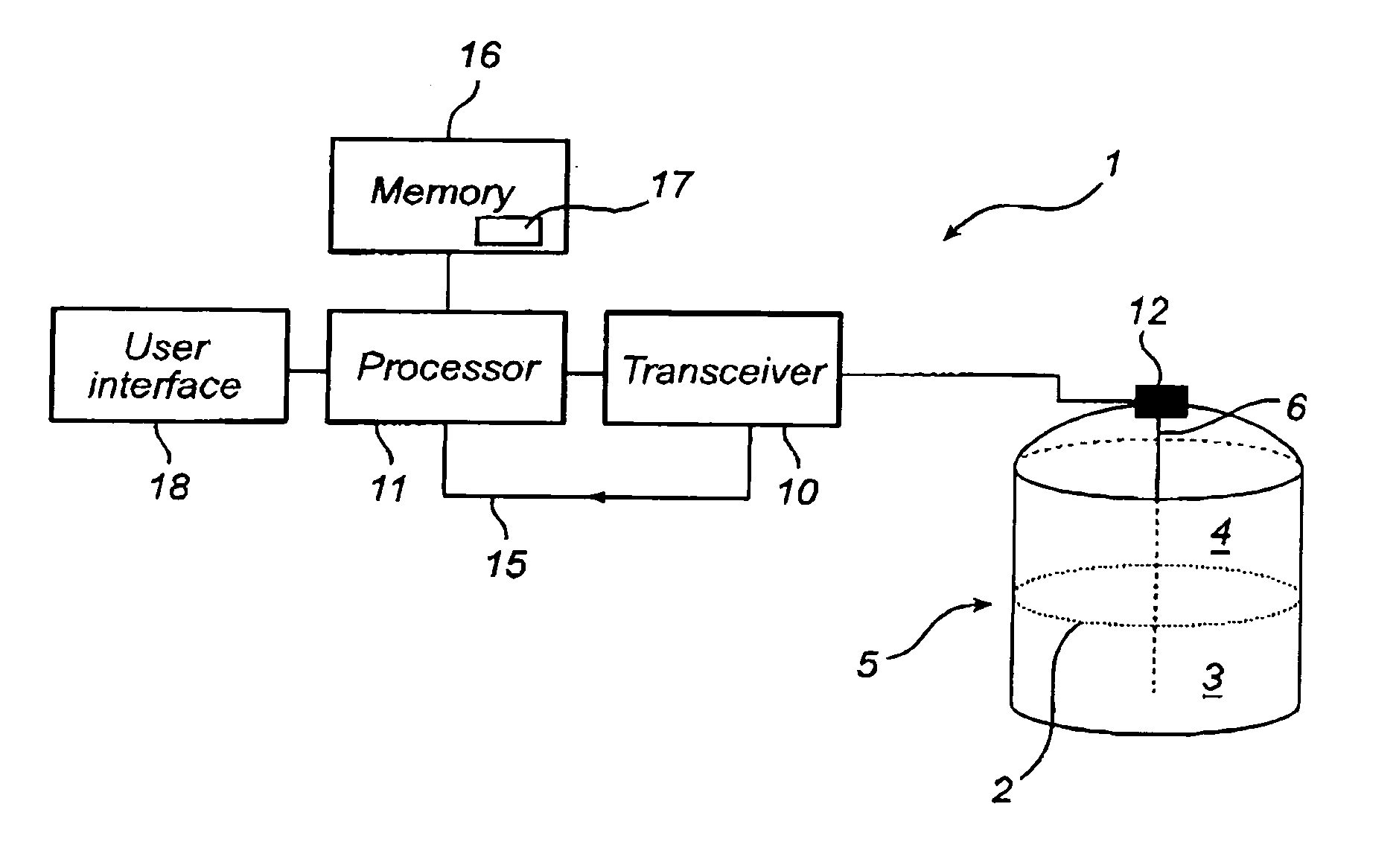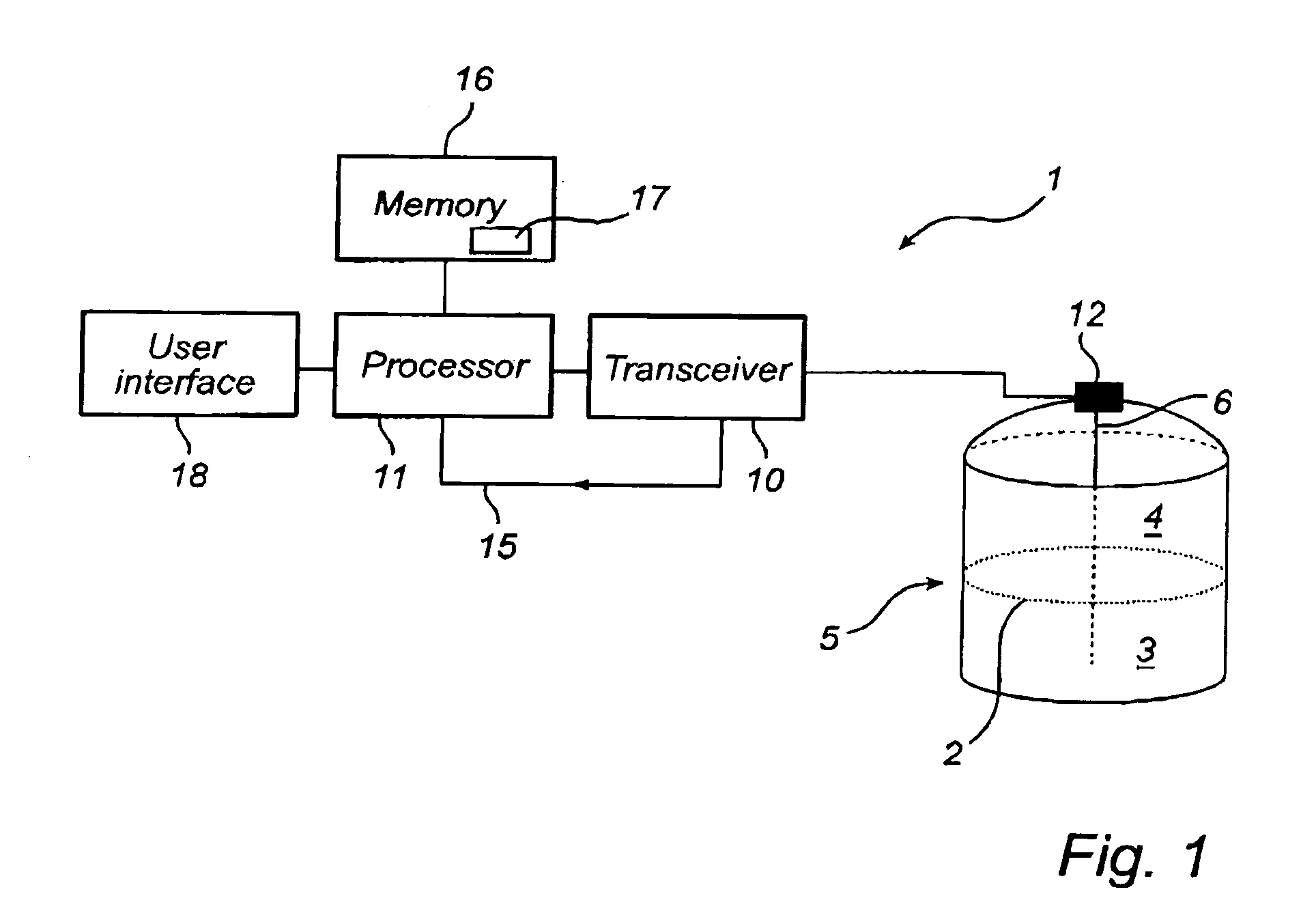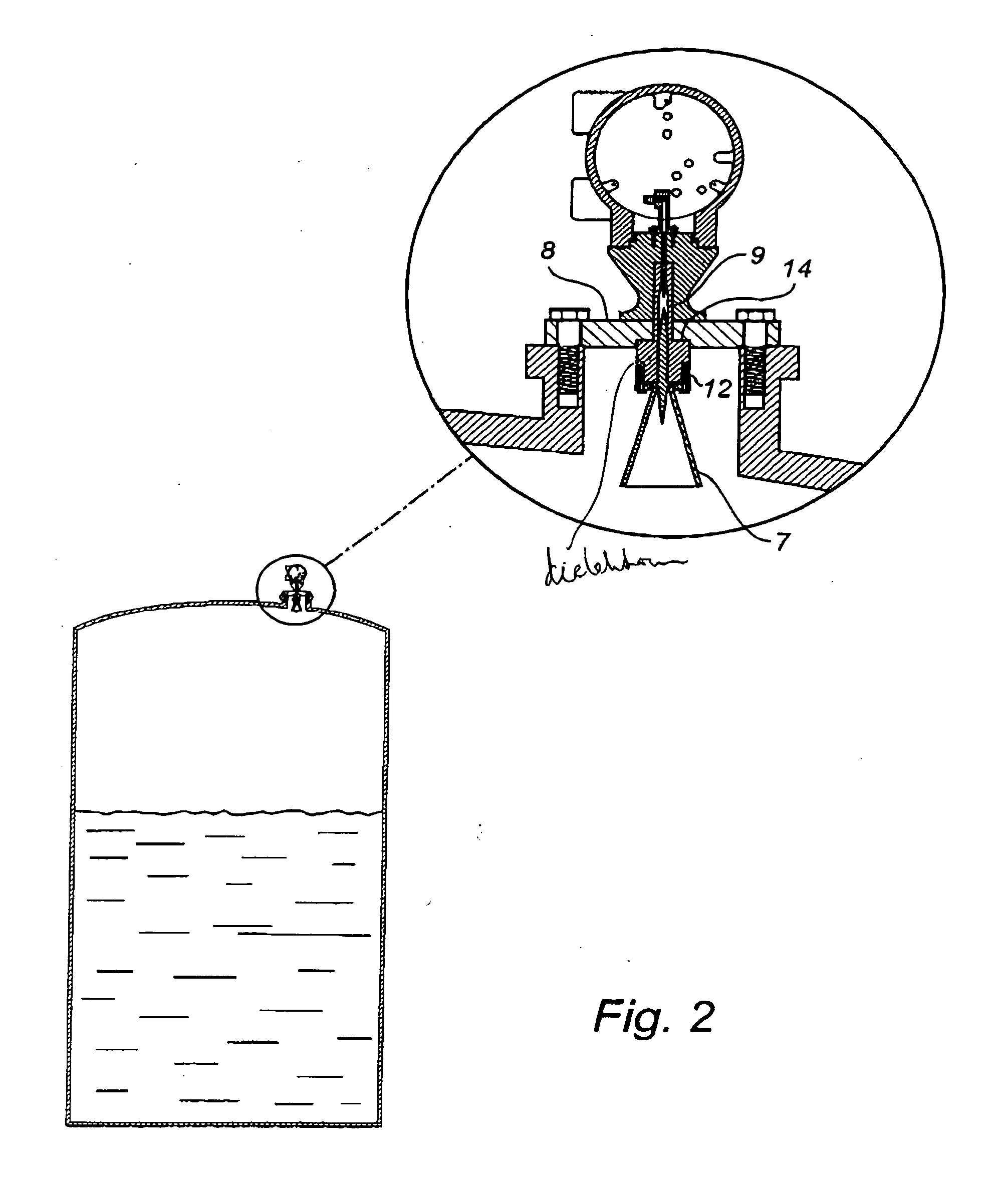Radar level gauge with variable transmission power
a technology of radar level gauges and transmission power, which is applied in the direction of level indicators by physical variable measurement, liquid/fluent solid measurement, engine lubrication, etc., can solve the problem of imperfect utilization of the dynamic range of the a/d-converter, the signal-to-noise ratio of the tank signal is not improved, and the received signal and any noise are equal. the effect of improving the utilization of the dynamic rang
- Summary
- Abstract
- Description
- Claims
- Application Information
AI Technical Summary
Benefits of technology
Problems solved by technology
Method used
Image
Examples
Embodiment Construction
[0030]FIGS. 1 and 2 schematically show two different types of pulsed radar level gauges (RLG) 1 in which a method according to the invention may be advantageously used.
[0031] In both figures, the RLG 1 is arranged to perform measurements of a process variable in a tank, such as the level of an interface 2 between two (or more) materials 3, 4 in the tank 5. Typically, the first material 3 is a content stored in the tank, e.g. a liquid such as gasoline, while the second material 4 is air or some other atmosphere. In that case, the RLG will enable detection of the level of the surface of the content in the tank. Typically, only the level of a first liquid surface is measured, and / or a second liquid surface if the first liquid is sufficiently transparent.
[0032] In both figures, the RLG 1 comprises a transceiver 10, controlled by a processor 11 to transmit electromagnetic signals to a signal medium interface 12 in the tank 5. The signals can be DC pulses with a length of about 2 ns or ...
PUM
 Login to View More
Login to View More Abstract
Description
Claims
Application Information
 Login to View More
Login to View More - R&D
- Intellectual Property
- Life Sciences
- Materials
- Tech Scout
- Unparalleled Data Quality
- Higher Quality Content
- 60% Fewer Hallucinations
Browse by: Latest US Patents, China's latest patents, Technical Efficacy Thesaurus, Application Domain, Technology Topic, Popular Technical Reports.
© 2025 PatSnap. All rights reserved.Legal|Privacy policy|Modern Slavery Act Transparency Statement|Sitemap|About US| Contact US: help@patsnap.com



